本文由 junya.ishigami+associates 授权mooool发表,欢迎转发,禁止以mooool编辑版本转载。
Thanks junya.ishigami+associates for authorizing the publication of the project on mooool. Text description provided by junya.ishigami+associates.
junya.ishigami+associates:本项目位于枥木县那须一家新酒店附近的草甸上,这里以前是一片水田;就像现在的环境一样,森林里长满了苔藓。追溯场地的历史,如今依然保留着场地上的一些遗迹,比如用来引水的水闸。
junya.ishigami+associates: The project is located in a meadow near the site of a new hotel in the natural setting of Nasu in Tochigi. Before, the meadow site was a paddy field; a forest overgrows with moss, like the present-day surroundings. Traces of the site’s history, such as a sluice gate to draw water in remained.
▼自由形态的水塘、精选树木构成了这个梦幻的水上花园 Free-form ponds and selected trees consist this dreamy water garden.
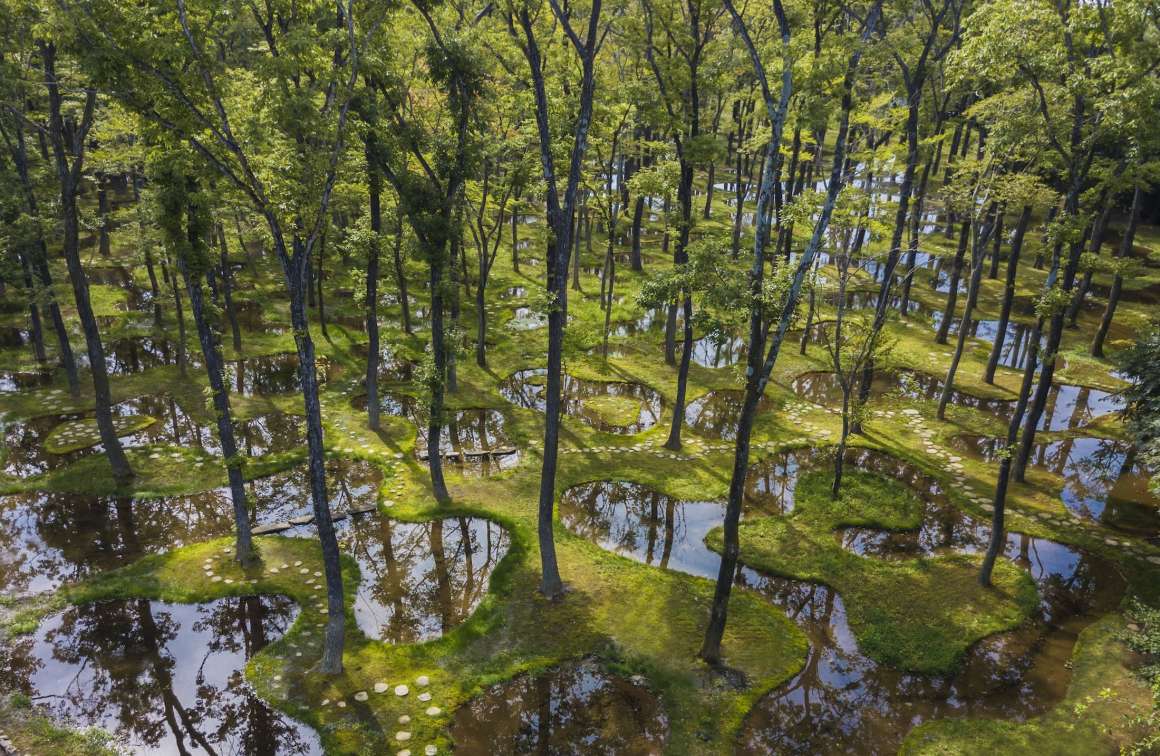
新酒店的场址曾经是一片森林,为满足酒店发展的需要,场地上许多树木都遭到了砍伐。由于附近草甸的总面积和这片遭受砍伐的森林近乎相同,所以本案是将整片森林迁移到了相邻的草甸上。这一方式改变了草甸的现况,不仅通过移动森林,还通过叠加场地内所有的历史环境层,将水田景观和苔藓森林景观重叠为一个整体。
The site of the new hotel was once a forest where many trees would have to be cut down in order to make way for the building. Since the total area of the forest and the meadow were nearly the same, the project relocates the entire forest to the adjacent meadow. This act transforms the meadow, not only by moving the forest but also by superimposing all layers from the history of the site’s former environment the landscapes of the paddy field and the mossy forest are overlapped as one.
▼森林里的树木被选型编号后迁移到临近的草甸上 Trees in the forest are moved to the adjacent meadow after being selected and codified.

▼每棵树木都做了编号记录 Carefully codification of trees.
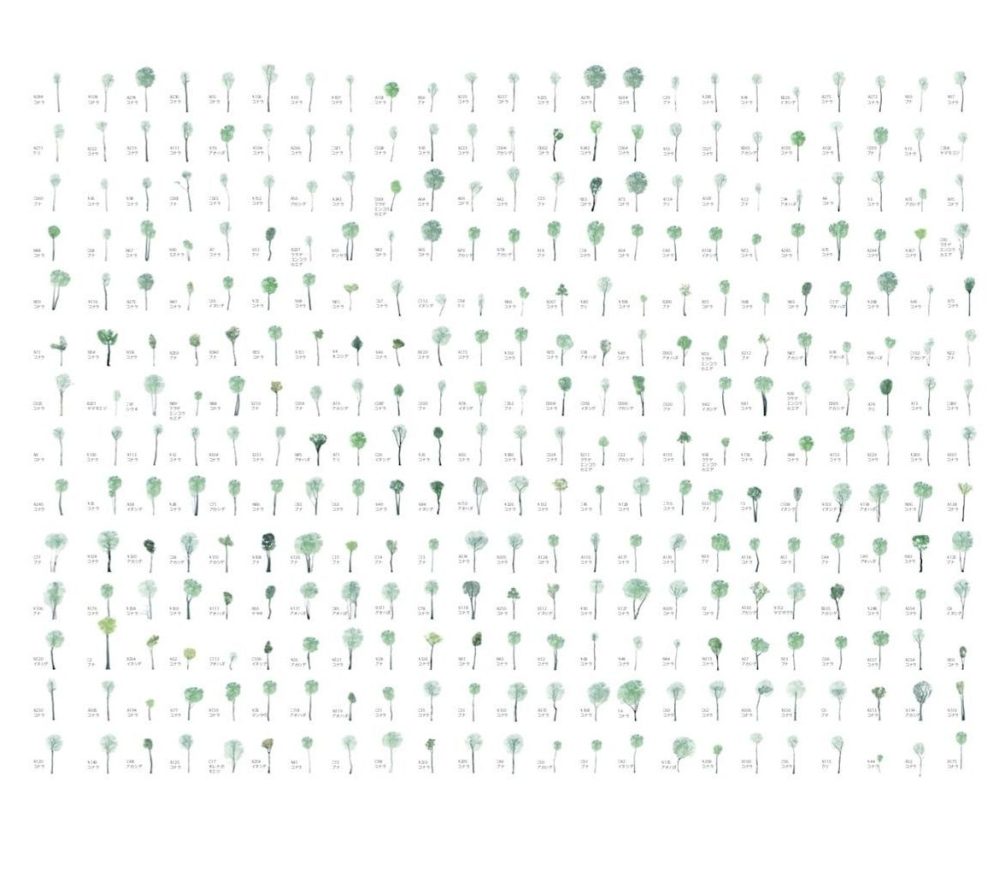
▼场地断面 Site sections.

那些曾经原本在这里,但从未相遇、从未交融的景观,现在得以重获新生。附近森林中的树木被重新排列栽植,水从现有的水闸中抽取,以填满无数个小池塘,这些水荡都与现有的灌溉系统相连,水以不同的流速潺潺流淌。
Landscapes that were originally here, but never met, mix and mingle with each other. Trees from the adjacent forest are rearranged on the site and water is drawn in from the existing sluice gate to fill countless ponds, which are all connected to the existing irrigation system with water flowing continuously at different rates.


水荡和树木以一种自然界从未有过的密度值遍布整个场地,苔藓铺设精美,填补了水荡和树木之间的空隙。在没有添加或抛弃任何东西的情况下,一个前所未见的新自然在场地上初露头角。
The ponds and trees are spread across the entire site at a density that is never found in nature. Moss laid out beautifully to fill the spaces in between. Without adding or discarding anything that was here, a hitherto unseen new nature appears on the site.
▼大小不一的石板引导游客穿行 Stone slabs in different sizes lead people to go through.
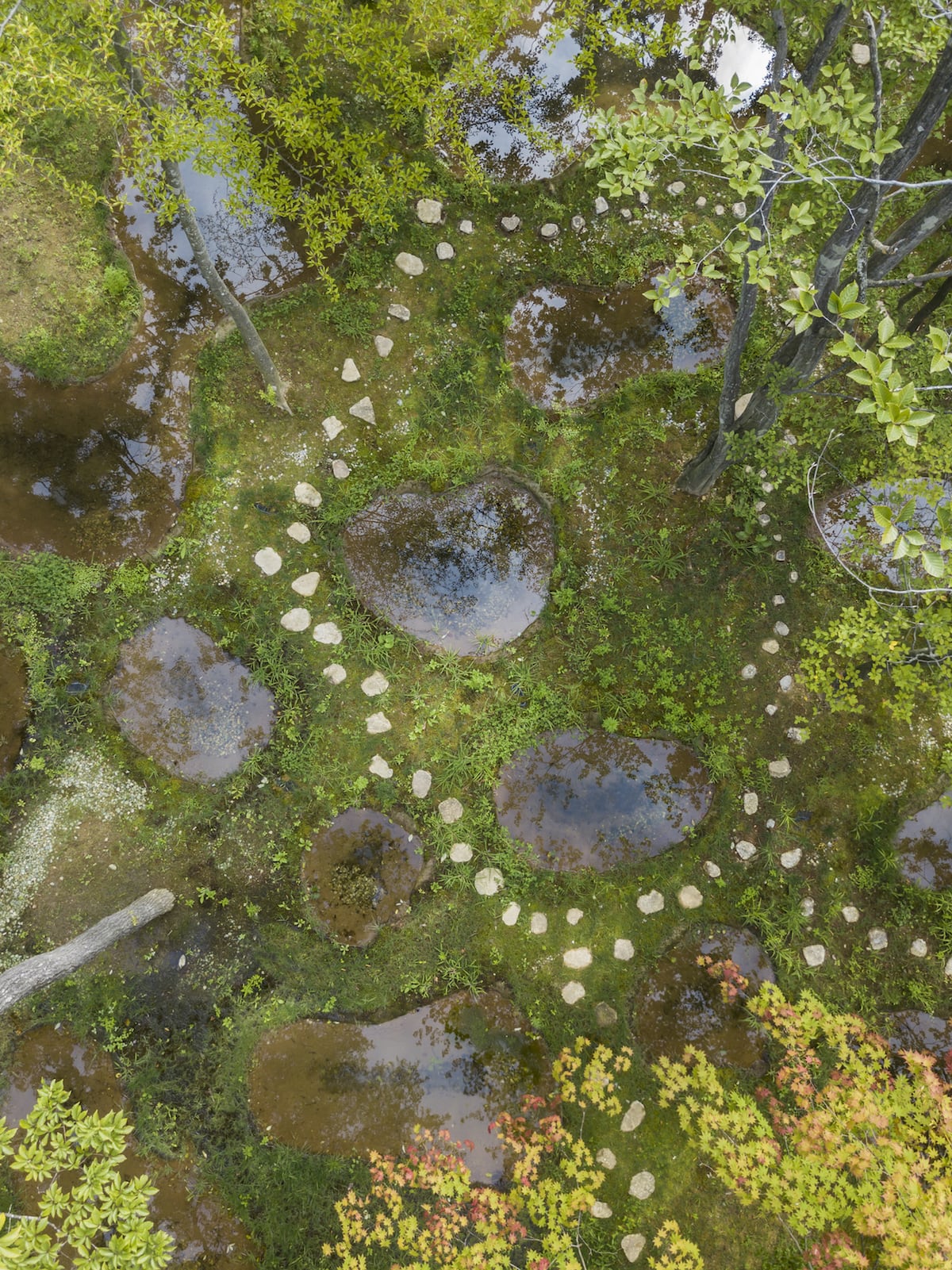
▼场地上苔藓铺设精美,填补了小水荡和树木之间的空隙 Moss laid out beautifully to fill the spaces in between.

规划景观就像规划建筑一样,扩大建筑规模和提高景观的精确度和专一性是同时实现的。通过设计特定形状的树木和池塘,原本笼统的森林景观便被赋予了明晰的框架体系,空间细节也更加丰富。通过对树木的移栽和重新排列,使每棵树都有了自主性,就像拼图碎片被目的性地移动一样。318种独特形态的树木形成了清晰的空间,160个小水荡填补了森林的间隙。
Planning landscapes as if planning architecture. Extending the scale of architecture and increasing the accuracy and specificity of the landscape are realised simultaneously. By planning specific shapes of trees and ponds, the vague scenery of the forest is given framework, and considered as a space with as much detail as possible. By moving trees to the adjacent site and rearranging them, the pieces of the puzzle are intentionally shifted. Autonomy of each tree is born. Luminous spaces appear between 318 unique tree shapes, at the same time 160 ponds are designed among these trees.
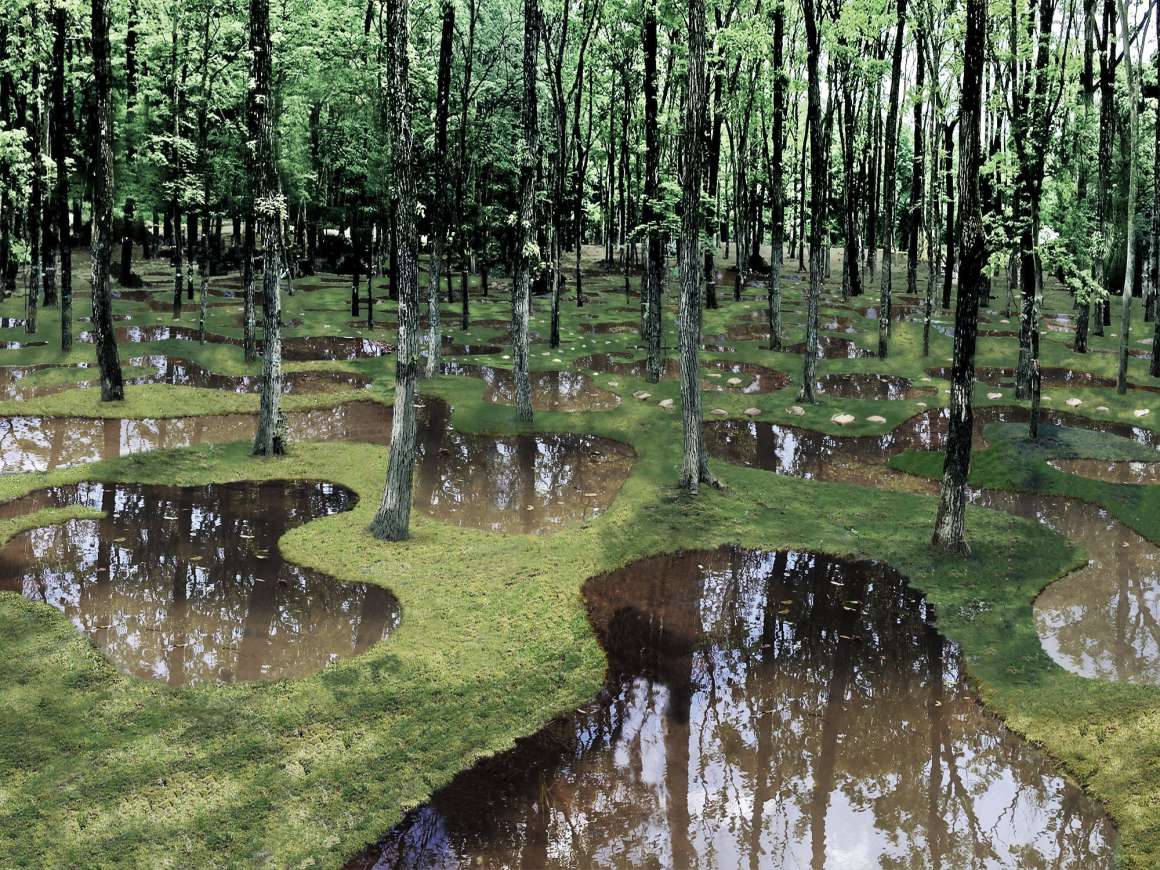
▼水从现有的水闸中抽取,填满了小水塘 Water is drawn in from the existing sluice gate to fill countless ponds.

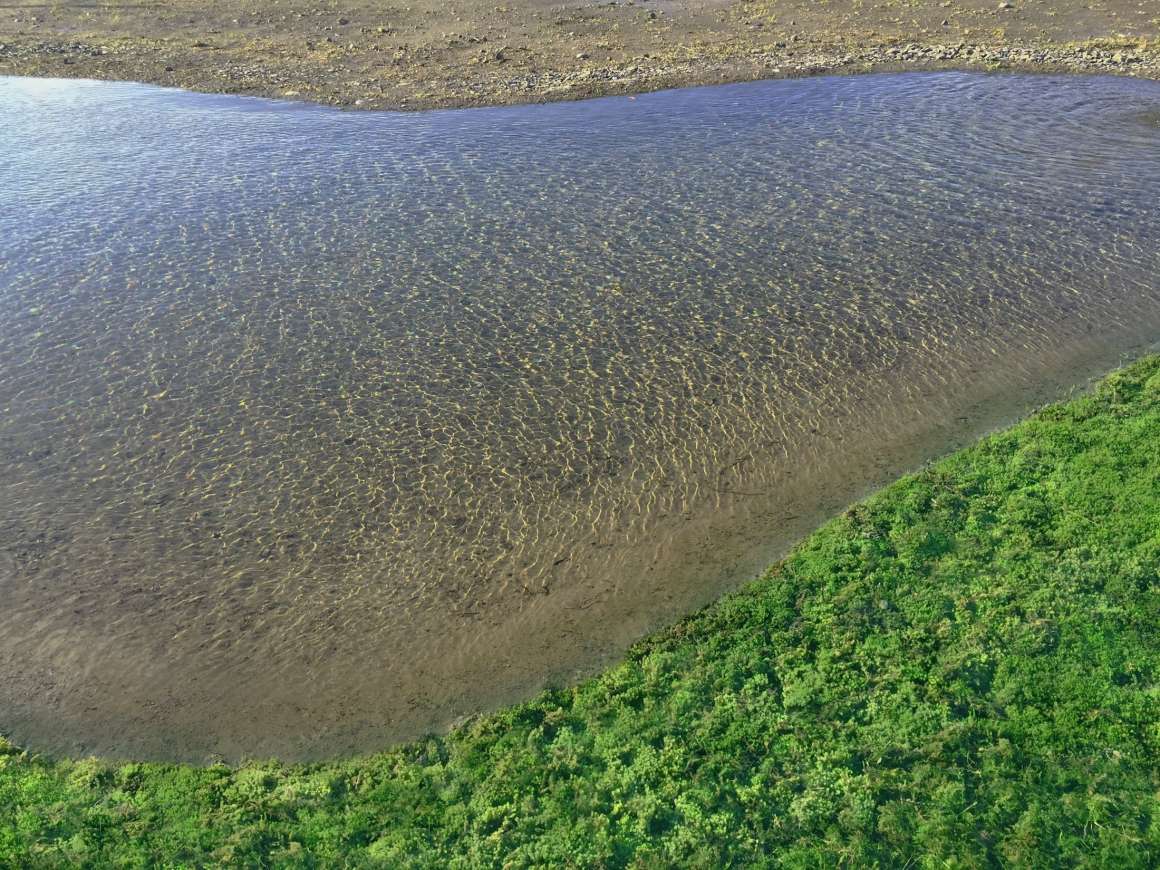
▼冬天下雪的水上公园,又是另一番景象 In winter, the snow gives water garden a new appearance.
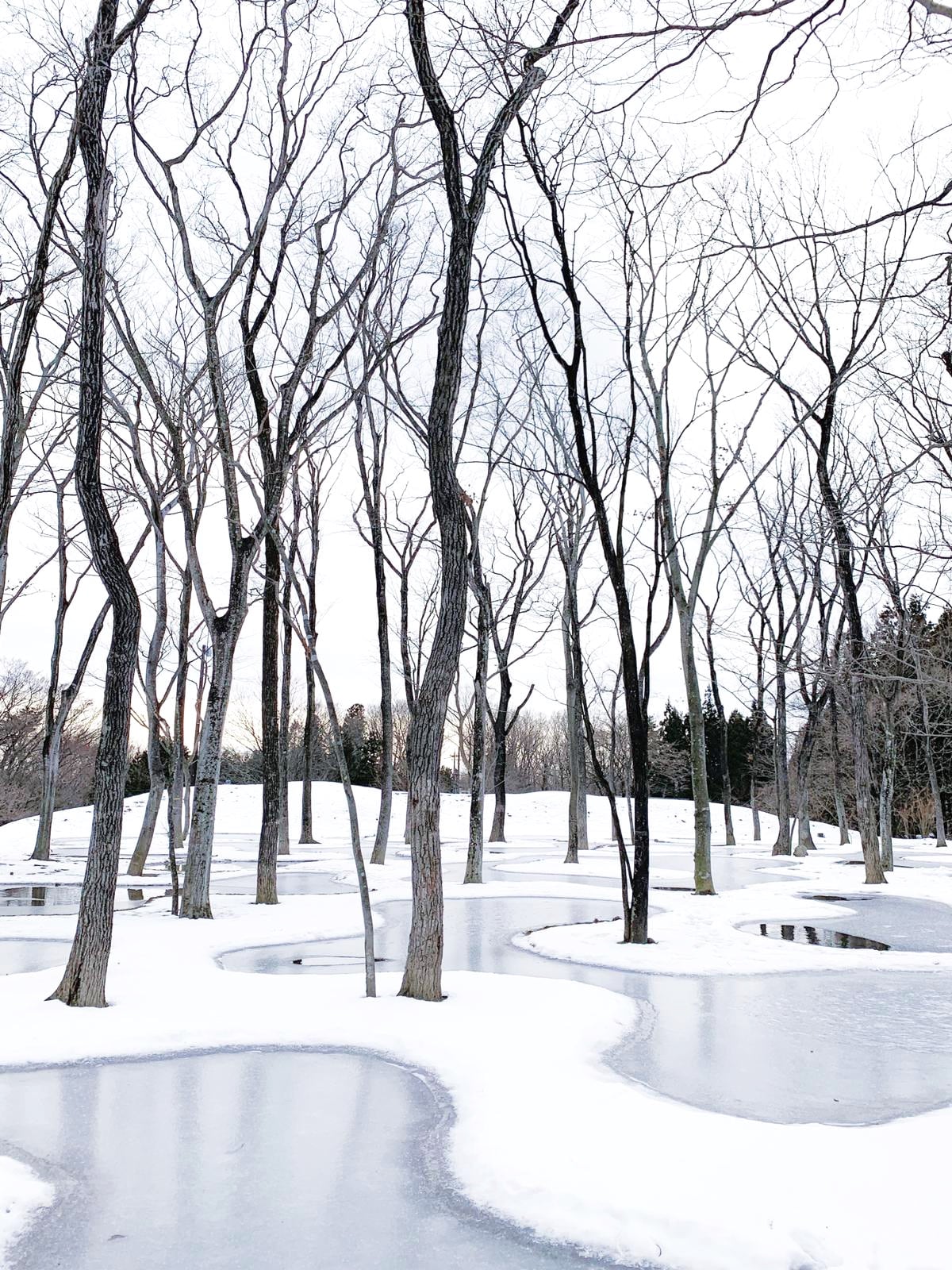
被移栽和重新排列的树木都属于落叶树种,比如山毛榉、栎属植物和苔藓植物。在现有的自然环境中,这些树种并不能与水亲密共存。不过通过运用防水技术,使场地实现了这样的共存关系,同时创造了出一种前所未有的新关系。
Trees that are moved and rearranged are all deciduous trees such as beech, quercus, and canine. These tree species cannot coexist with water in close proximity in the existing natural environment. By applying waterproofing in the ponds, this coexistence and a new relationship which never existed are created.
▼水荡剖面分析图 Pond section analysis.

▼池塘施工详图 Pond construction details.
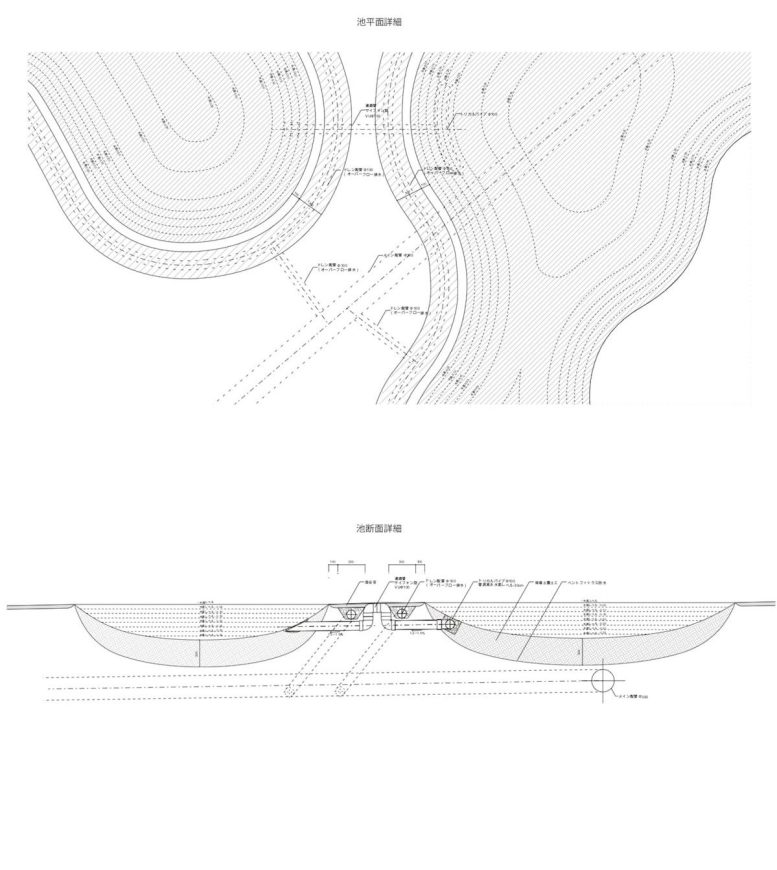
人类如何干预自然环境?新自然的出现会改变我们的生活环境吗?通过对自然的精心规划,自然环境和人类环境会更加紧密地交织融合在一起。
How can human beings intervene in the natural environment? Will the new nature created by them change our living environment? By planning nature in a detailed way, natural environment and human environment mingle, intertwine and merge more closely.
▼展现人与环境关系的场地剖面 Site sections express the relationship between human and the nature.
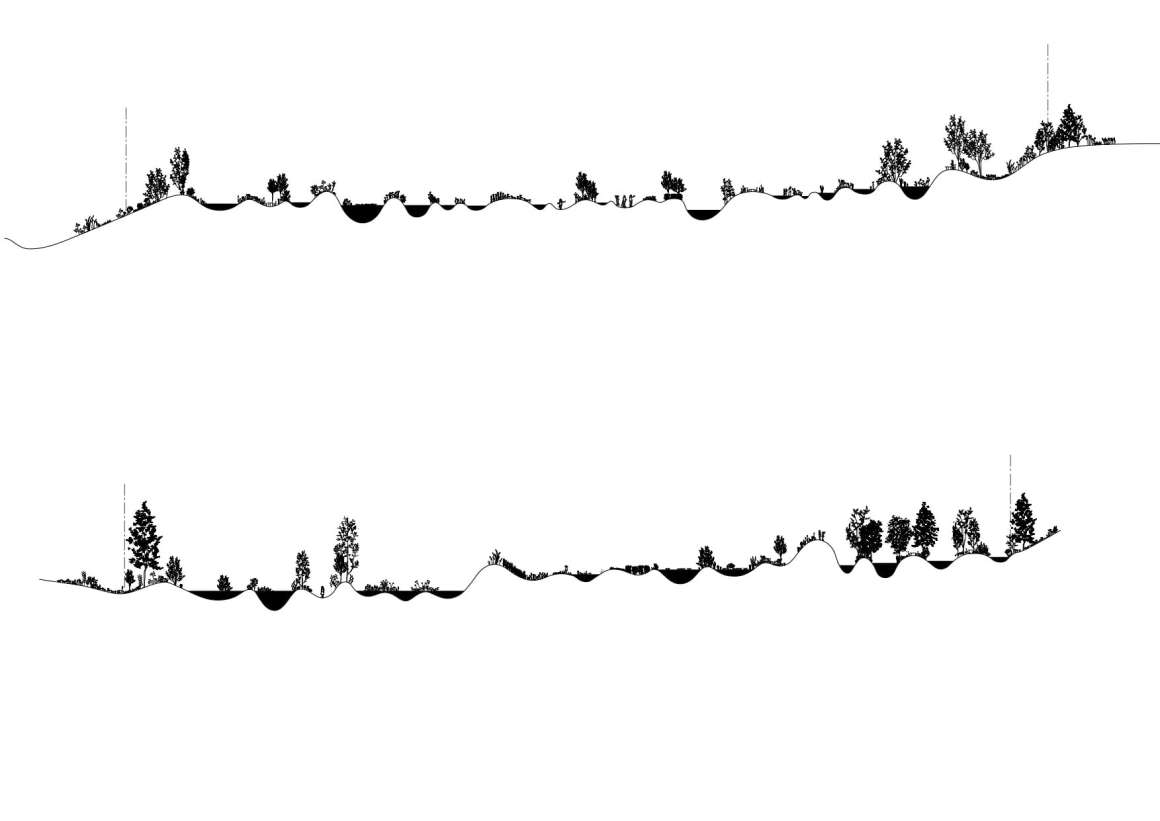
▼场地人工干预的各种处理手法 Treatment approaches of manual intervention with site.
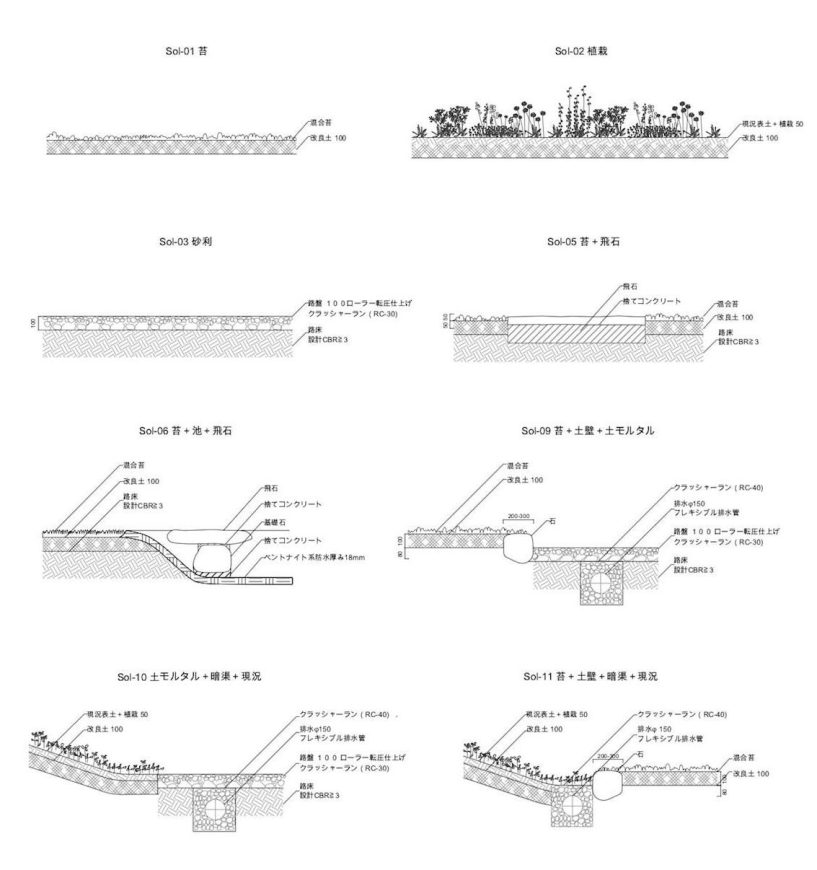
▼树木移栽过程 Moving process.

▼效果图 Perspective
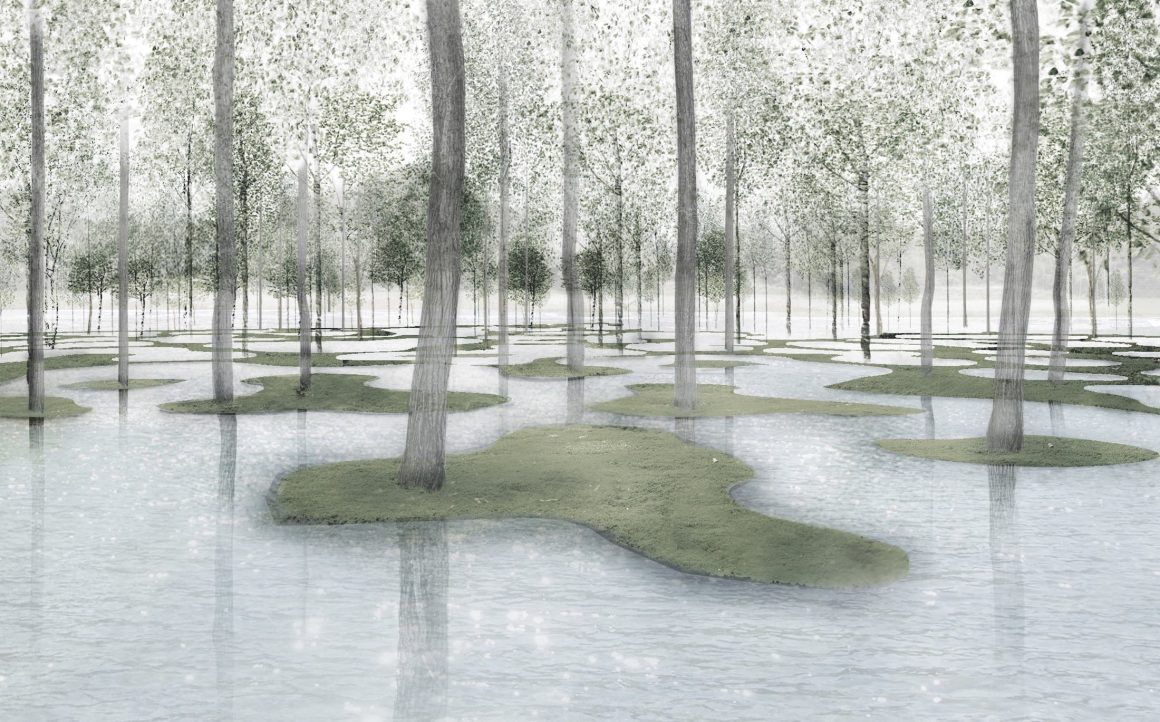
▼局部区域平面、剖面、效果 Plan, section and perspectives of local area
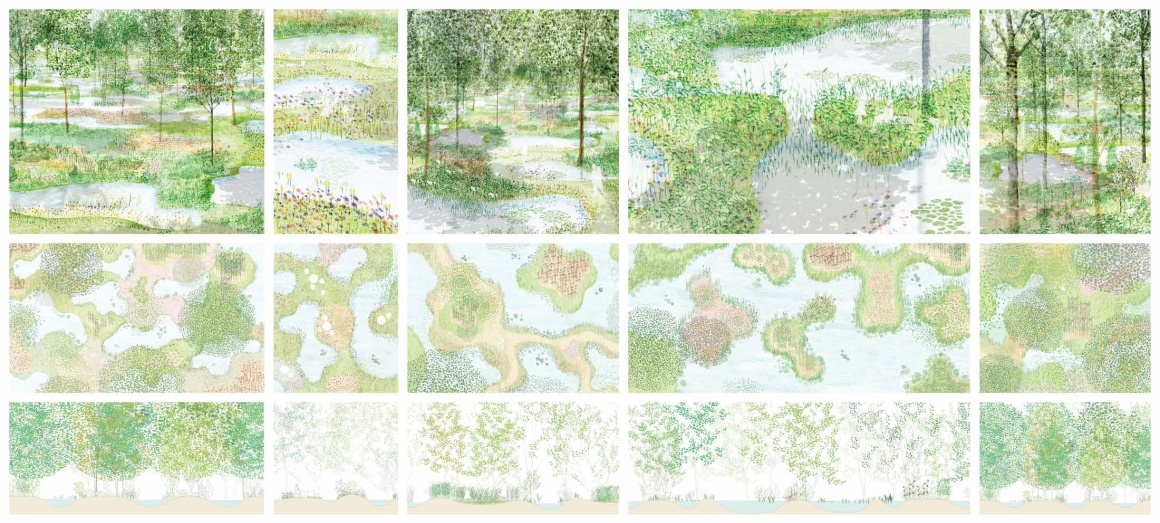
▼项目区位 Site plan
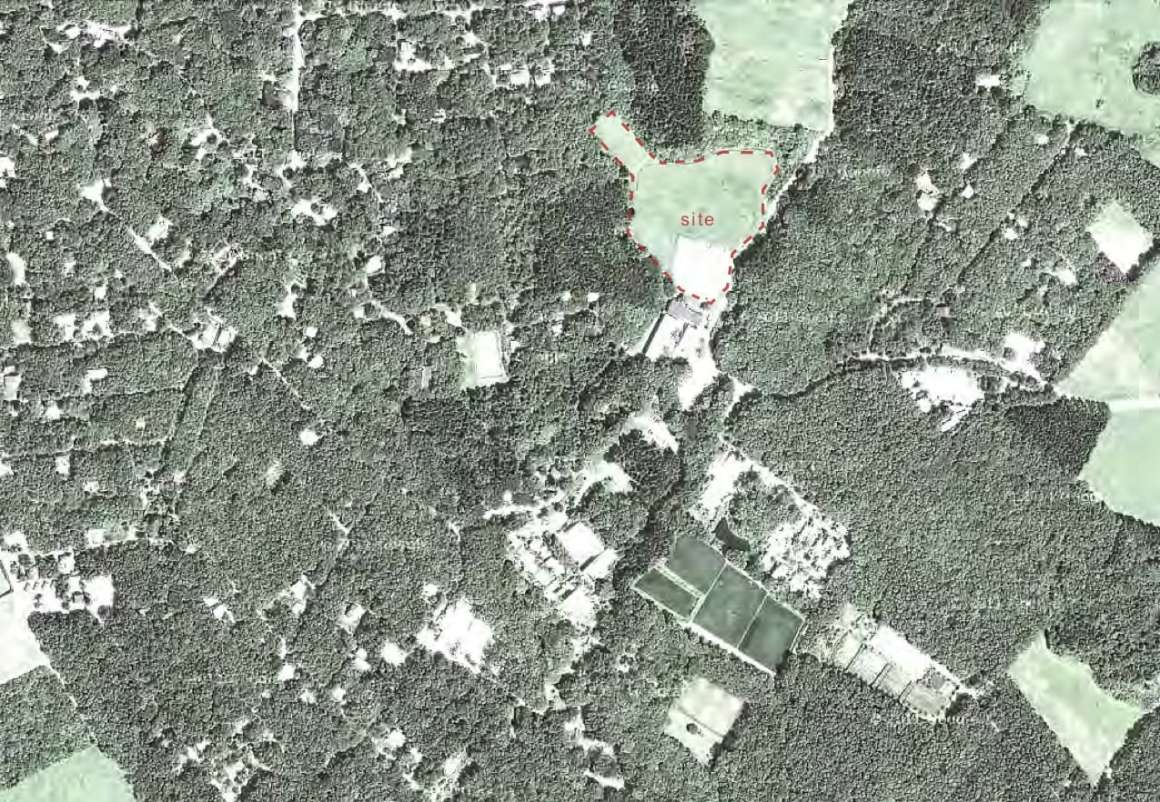
▼平面 Plan


项目名称和地点:植物园艺术生物空间 /水上花园,日本枥木
设计公司:junya.ishigami+associates
设计团队:Junya Ishigami, Eiko Tomura, Taeko Abe, Lucie Loosen. Gaku Inoue, Akira Uchimura, Masayuki Asami
现场监理:junya.ishigami+associates
客户:Yokozawa Farm Inc.
场地面积:16,670m2
建筑面积或总建筑面积:16,670m2
设计阶段:2013-2017年
建设阶段:2017-2018年
承包商:Shizuoka Green Service Co.
Name and site of the project: Botanical Garden Art Biotop / Water Garden, Tochigi, JAPAN
Architects: junya.ishigami+associates
Design team: Junya Ishigami, Eiko Tomura, Taeko Abe, Lucie Loosen. Gaku Inoue, Akira Uchimura, Masayuki Asami
Site supervision: junya.ishigami+associates
Client: Yokozawa Farm Inc.
Site area: 16,670m2
Built area or Total floor area: 16,670m2
Design phase (beginning and ending month, year): 2013-2017
Construction phase (beginning and ending month, year): 2017-2018
Contractor: Shizuoka Green Service Co.
更多 Read more about: junya.ishigami+associates



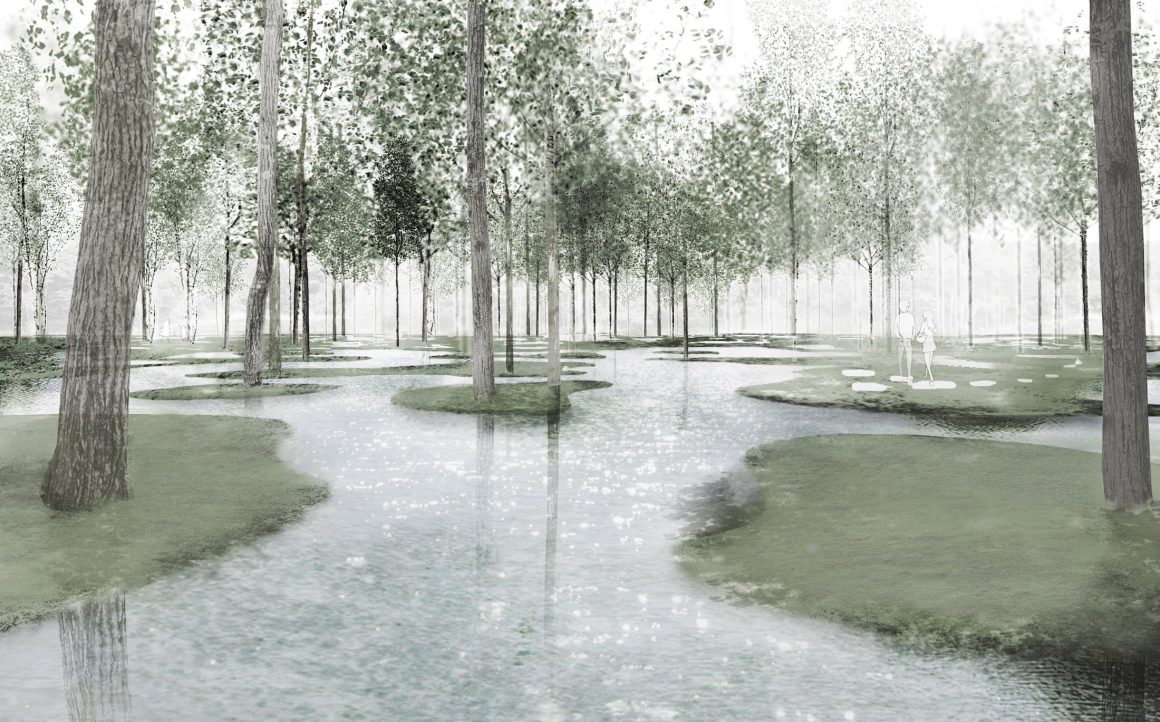
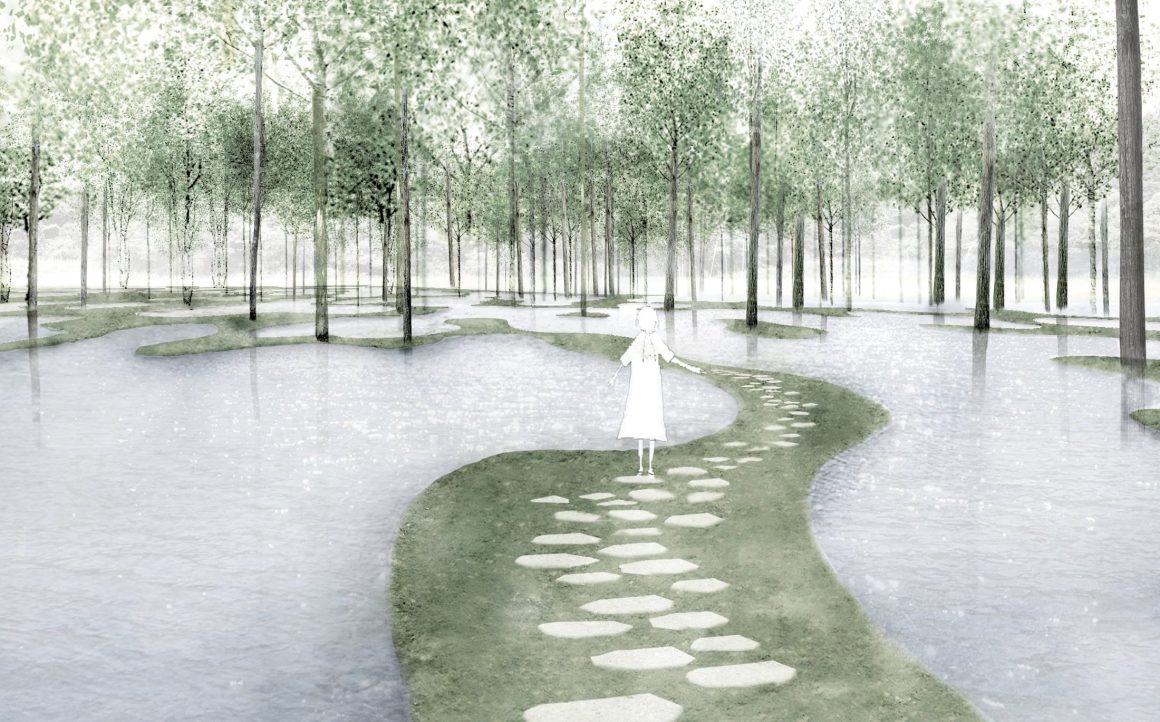
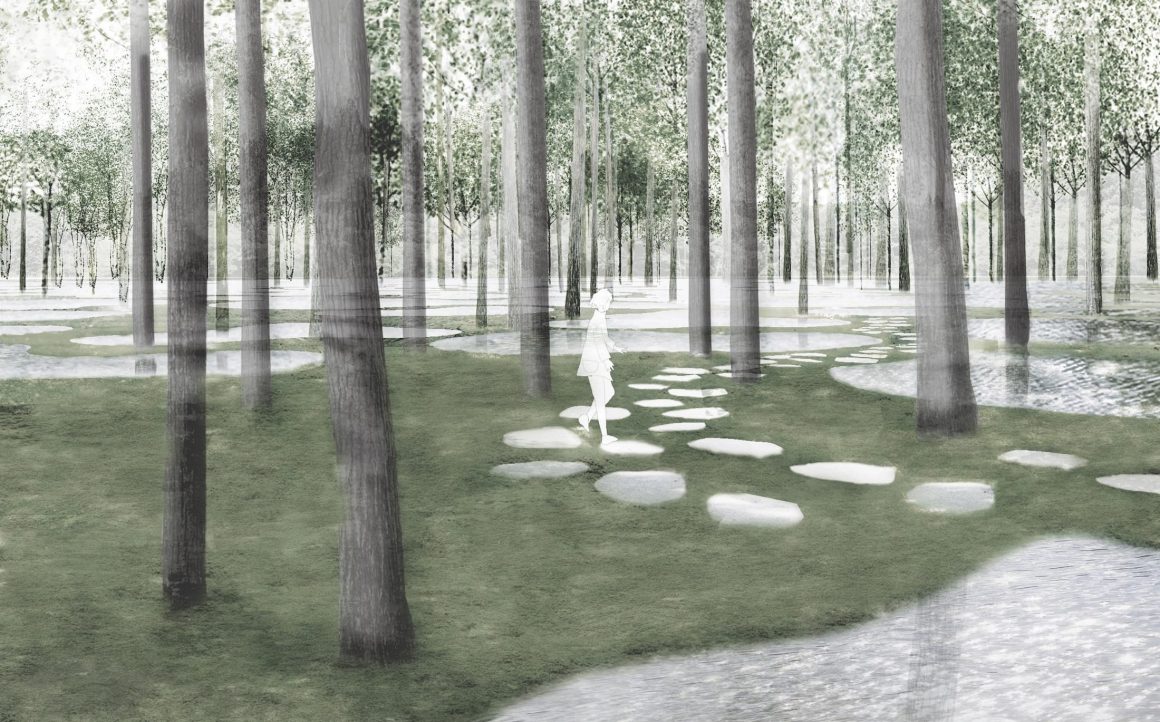


报告~已列入旅日行程~
树根力量很大,时间久了不会突破防水层吗
这个塑造的形态保持不住叭